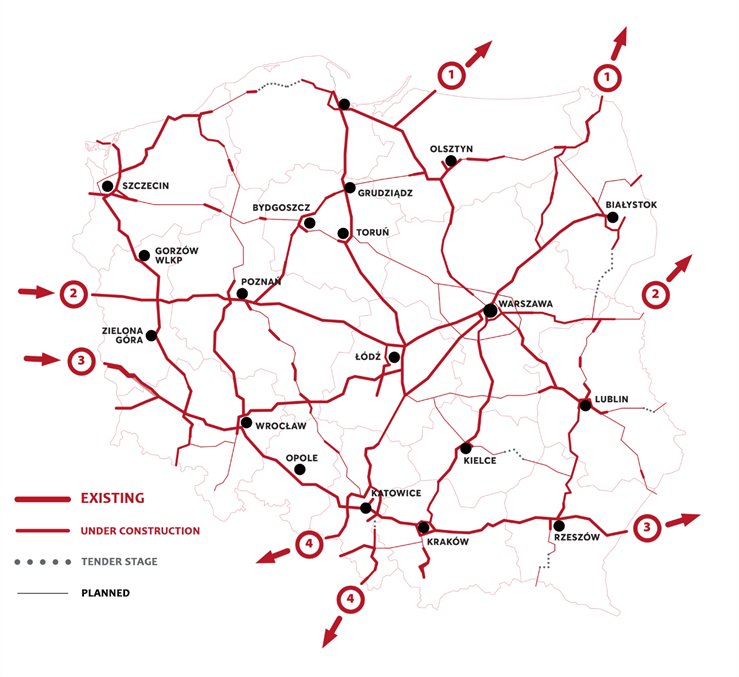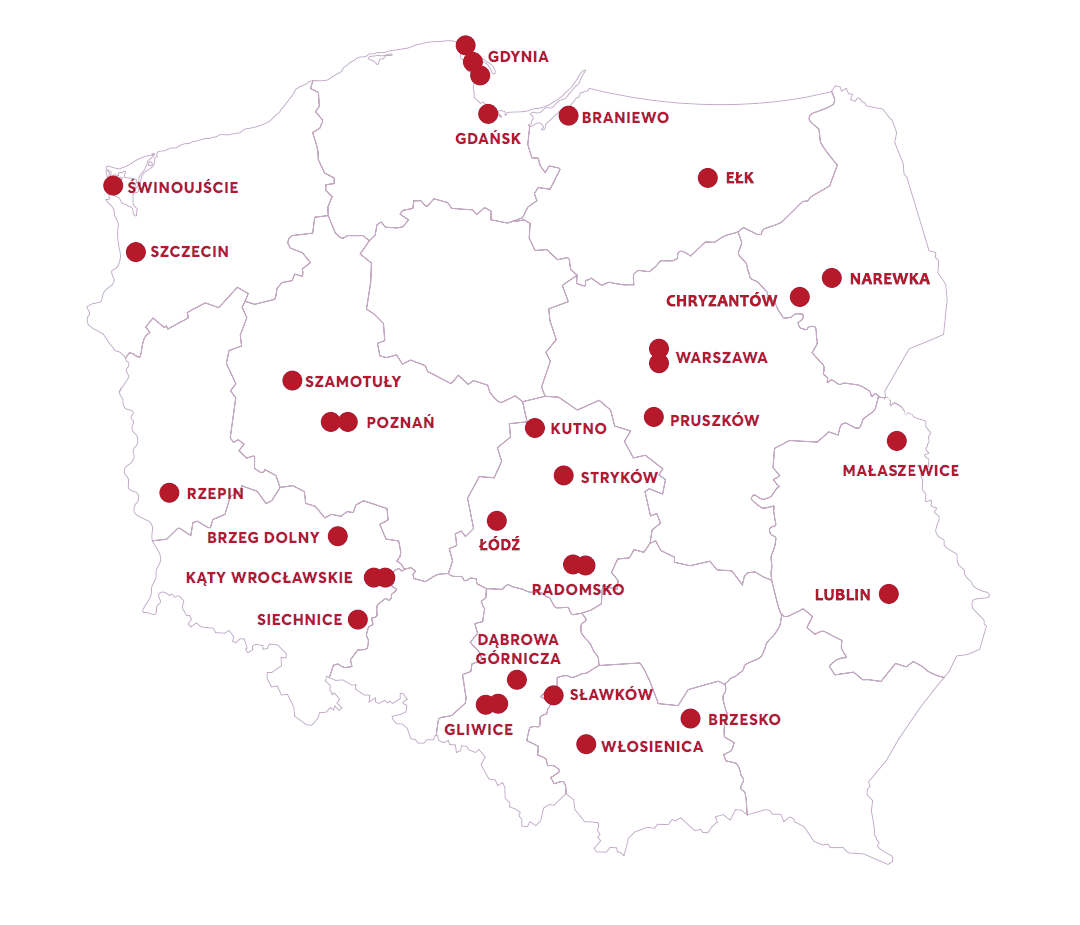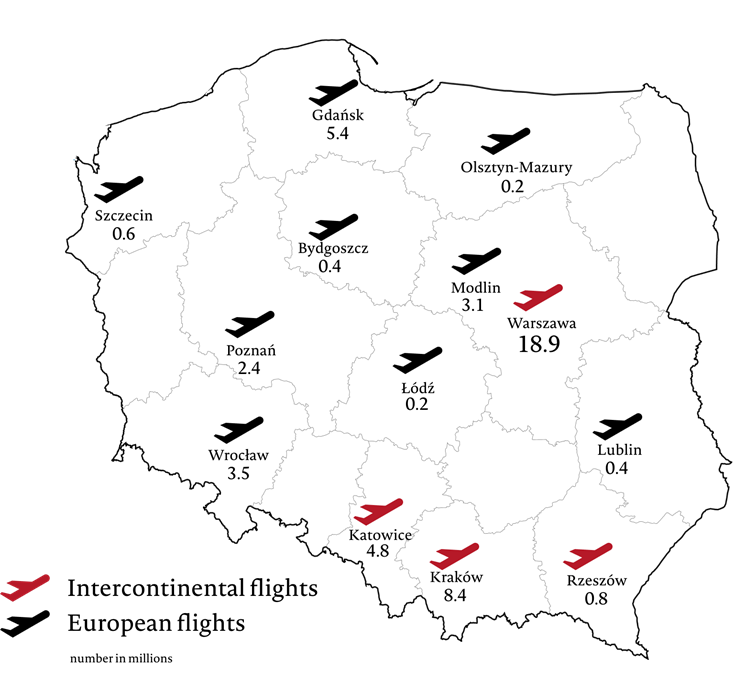This website uses cookies so that we can provide you with the best user experience possible. Cookie information is stored in your browser and performs functions such as recognising you when you return to our website and helping our team to understand which sections of the website you find most interesting and useful.
Strategic location in the heart of Europe
 |
| Map ref. number | Route | A number of connected countries |
| 1 | Helsinki – Tallinn – Riga – Warszawa/Gdańsk | 6 |
| 2 | Berlin – Warszawa – Minsk – Moscow – Nizhny Novgorod | 4 |
| 3 | Berlin/Dresden – Wrocław – Katowice – Kraków – Rzeszów – Lviv – Kiev | 3 |
4 | Gdańsk – Grudziądz – Toruń – Łódź – Katowice – Żylina – Ostrava | 3 |
Transshipment terminals in Poland
 |
Maritime transport
1. The Port Szczecin
Is a universal port that supports both general cargo (containers, oversized cargo) and bulk cargo (coal, coke, grain, etc.). It can be used by ships with a maximum length of 215 m and a maximum draft of 9.15 m. In 2018, cargo turnover in the port of Szczecin accounted for 10.2% of the turnover in Polish seaports.
2. The Port Świnoujście
Is located directly on the Baltic Sea coast. It can be used by ships with a maximum length of 270 m. and a maximum draft of 13.5 m. The port houses a terminal handling dry bulk cargo, mainly coal, ore and agricultural products (a terminal specializing in transshipment of agri-food goods). An important function of the port is the handling of general cargo reloaded using conventional methods, as well as in containers and in the ro-ro system. The port in Świnoujście has a ferry terminal with five bays which serve passenger-car and car-rail ferries on the route to Sweden. Świnoujście’s share of cargo turnover of Polish seaports in 2018 was 18.3%. In terms of the regular connections, they are to the Scandinavian countries, Great Britain, Ireland and Russia as well as container feed connections to the largest base ports of- Hamburg, Bremenhaven and Rotterdam.
3. The Port Gdynia
In 2018, the turnover in the port of Gdynia accounted for 22.8% of the total turnover of Polish seaports and amounted to 20,974.3 thousand tones, reaching the highest level recorded since the year 2000. The port specialises in handling general cargo, mainly unit loads transported in containers (it has two modern container terminals) and in handling rolling units (terminal for ro-ro units). Ships with a maximum length of 340 m and a draft of up to 13.0 m may call at the port of Gdynia.
4. The Port DCT Gdańsk and its Deepwater Container Terminal
The annual capacity of the terminal is 3,000,000 TEU and the storage area is 55,000 TEU. It can be used by ships with a maximum length of 425 m and a maximum draft of 15 m. The port of Gdańsk has the largest share of cargo turnover of all Polish seaports, which in 2018 amounted to 46.2%.
 |




